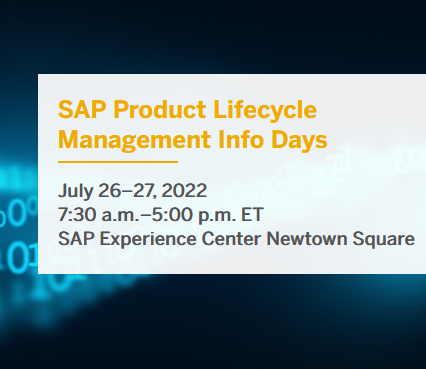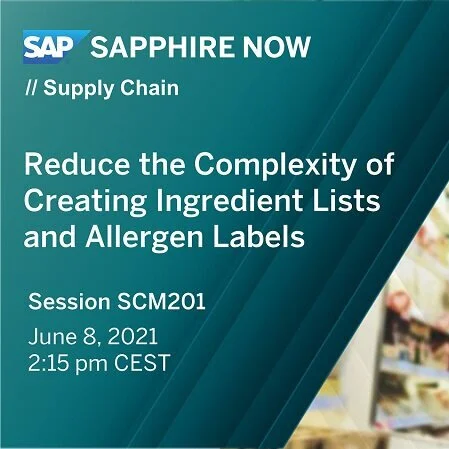BLOG: Navigating the New Texas Food Label Law: What It Means and How to Respond
New Texas Food Label Law: What Is It & What To Do About It
by Andy Crossett | Gramont North America | August 2025
On August 1, 2025, Texas enacted a new food labeling law requiring manufacturers to explicitly declare if their products contain any of 40 specific food dyes and additives that are not recommended for human consumption in Australia, Canada, the European Union, or the United Kingdom. This legislation introduces a new layer of complexity for food companies distributing in the U.S. and especially those managing regional variations in product formulas, labels, and compliance requirements.
This as a pivotal moment for food and beverage companies to evaluate the agility and compliance readiness of their product lifecycle management (PLM) systems. This law is not just a label update, rather it demands coordinated changes to master data, specifications, recipes, logistics, and labeling processes, particularly for companies operating in SAP environments.
Key Requirements of the Texas Law
Products must disclose if they contain any of the 40 regulated ingredients.
Labels must use the specific statement: “Contains ingredients not recommended for human consumption in the EU, UK, Canada, or Australia.”
This applies to final products and ingredient compositions—even if the ingredient is part of a compound mixture.
PLM and Labeling Implications: What Needs to Change
To comply effectively, food manufacturers will need to rethink how they structure and manage data and processes in PLM, particularly around:
1. Master Data and Specifications
Qualitative attributes like “Contains,” “Does not contain,” or “May contain” must be added and maintained in the specification property tree.
The inclusion status of each of the 40 additives must be trackable at both the ingredient and finished product levels.
Specifications may require new usages or regional designations, such as “US - Texas”, to differentiate from other U.S. markets.
2. Recipes and Alternatives
If a product must be reformulated for Texas only, a new recipe alternative may be necessary.
In some cases, a new material number may need to be created to segregate Texas-specific SKUs from the broader supply chain.
This introduces challenges for version control, manufacturing instructions, and material planning.
3. Compliance Checks
Your existing composition compliance checks must be updated to flag non-compliant additives.
Qualitative attributes tied to the 40 substances should dynamically update when formulations change.
These rules should be incorporated into your SAP EHS or equivalent module to enable automated checks at scale.
4. Labeling Solutions
Consumer and customer unit labels will require new alternative versions that incorporate the required language and visual cues.
Labels must reflect up-to-date ingredient composition, including additives introduced via compound ingredients.
This will likely necessitate new label templates and workflows tailored for Texas compliance.
5. Logistics and Supply Chain
Separate material numbers and recipes may require dedicated inventory for the Texas market.
MRP planning will need to isolate production runs for Texas-compliant products.
Order fulfillment and ERP logic must ensure that orders shipped into Texas pull from the correct inventory/SKU.
Why This Matters: More Than Just Texas
Though this is a state-level law, it signals a broader trend: regionalized compliance and labeling requirements are increasing globally, and your PLM system needs to be equipped to adapt without operational bottlenecks or compliance risk.
If your organization currently uses SAP PLM or SAP EHS, this law highlights the importance of:
Granular attribute management
Recipe/version control
Automated compliance checks
Label management at scale
Market-specific product governance
How To React: From Complexity to Control
This is not just a compliance exercise – it’s an opportunity. Companies that respond with flexible, system-enabled solutions will gain a competitive edge in a regulatory landscape that’s only getting more complex.
Gramont can help clients leverage SAP PLM and EHS tools to:
Centralize and harmonize specification management
Automate compliance checks against regulated substances
Create region-specific recipes, materials, and labels
Enable dynamic labeling and inventory control for market-specific needs
Establish best practices for ongoing regulatory readiness
What You Need: A Comprehensive Plan
Let Gramont’s team of experts help you…
Audit your current portfolio for products containing the flagged additives.
Assess your ability to track qualitative composition attributes within your PLM system.
Review recipe and material structures to evaluate if Texas-specific versions are needed.
Update compliance check logic to identify affected products dynamically.
Review label design and print processes to prepare for new language and formatting needs.
Develop a change management plan to coordinate across R&D, regulatory, supply chain, and labeling teams.
Looking Ahead
The Texas law won’t be the last of its kind. As public scrutiny of food additives and transparency grows, companies must be prepared for more localized, more prescriptive regulations. Now is the time to invest in your data, systems, and processes to future-proof your compliance strategy.
Interested in Learning More?
Here are some links to a couple of external resources for further reading on these changes to provide additional context regarding the new laws, including an example of how Louisiana is in lock step with introducing enacting their own requirements:
What the Texas food label law means for the rest of America
Louisiana and Texas pass laws requiring warning labels for foods































